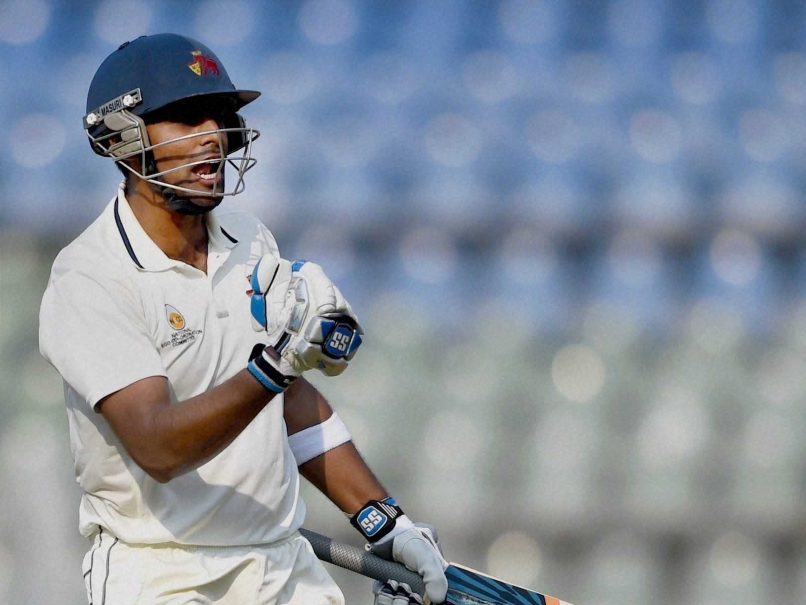Why Suryakumar Yadav’s Test call-up is a damning indictment of India’s celebrated ‘A’ system
Five months ago, Suryakumar Yadav did not have an international cap to his name. In three weeks’ time, he could join the likes of Thakur and Natarajan as Indian players who have played all three formats in 2021. But should the Mumbaikar’s call-up actually serve as a cause for concern?

Hours (or days) from now, Suryakumar Yadav, in all likelihood, will be on a chartered flight to England. At 30, in the form of his life, at the absolute peak of his career, Suryakumar couldn’t have hoped for a better time to get a Test call-up. Some have already expressed discontent with the BCCI’s decision, terming Suryakumar a white-ball specialist, but this is simply not true.
In 2010, at the age of 20, he was seen as Mumbai’s next big thing and in his first full Ranji season, he averaged a stunning 68.54, outscoring behemoths such as Abhishek Nayar and Wasim Jaffer. Post the 2011/12 season, his red-ball career, for several reasons, never hit the heights it should have, but that he averaged 56.44 and struck at 95.13 in his last Ranji season (2019/20) should put to bed the claims that he’s only fit for white-ball cricket. Suryakumar Yadav will do well in England if indeed he is handed a Test cap.
Much like Washington Sundar, who also played the Gabba Test with an invisible ‘white-ball specialist’ tag pasted on his jersey. Sundar, prior to the Brisbane Test, had not played any red-ball cricket in more than three years, yet he out-batted every single ‘Test specialist’ that was present in that Indian side. He then backed it up with another remarkable showing against England where, again, he looked more of a Test batsman than both Pujara and Rahane. There is every chance that Suryakumar, like Sundar, might end up doing the same or if anything, bettering it.
Casting aside the individual quality of these two players (and the others), though, there is a very important question we need to be asking the BCCI, the NCA and those responsible for grooming players at the domestic and junior levels: why is the pipeline (that not too long ago was being described as the best in the world) not churning out specialist red-ball middle-order batsmen who are capable of taking the mantle over from the incumbents?
When the Indian side led by Ajinkya Rahane, against all odds, breached Gabba and conquered Australian soil, the victory was attributed to the country’s robust system that was responsible for producing players. And indeed, why wouldn’t it be? You had net bowlers that were plucked out of thin air who seemed Test match ready; the level at which the debutants played was truly scary. From scouts to former selectors to those working at the age-group level, everyone came forward and sang praises about the system, which almost everyone unanimously acknowledged was unparalleled.
Yet taking a step back, the system seems to be selective and peculiar in the kind of players it produces. For while there is no paucity of openers and fast bowlers in the country, there is a concerning dearth of middle-order batsmen. And the recent call-ups to KL Rahul, Washington Sundar and Suryakumar Yadav, all based on white-ball form, pretty much proves the statement.
Consider this: in the 2019/20 season of Ranji Trophy - the last red-ball season in the country - Sarfaraz Khan was the only middle-order batsman outside of the bottom two divisions to feature among the Top 8 run-getters. Yet he is nowhere near being Test ready, having only played 17 first-class games in total and having yet to make a single appearance for the India A side. Sheldon Jackson, Manoj Tiwary and Ganesh Satish were the only other batters from Elite Group A & B to feature in the Top 15 run-getters, but all three are in their mid-30s, nowhere close to the picture of national selection.
A fully-fit Shreyas Iyer is perhaps, without a shadow of a doubt, the most obvious candidate that will get into the Test team but it is worth noting that Iyer himself has not played any red-ball cricket since February 2019. In fact, you’ll have to go all the way back to 2016 to find the last instance of Iyer playing more than 5 games in a single Ranji Trophy season, with his focus completely being shifted to white-ball cricket, particularly after having become a marquee Indian player in the IPL.
Karun Nair, now 29, was not too long ago the ‘next in line’, but his form has taken a nosedive post his axing from the Test side, with him having averaged under 27 in each of his last two Ranji Trophy campaigns.
His teammate, Manish Pandey, you would think, is tailor-made for the longest format - and in many ways, he is, with his FC average of 51 being indicative of the same - but he has not been in the reckoning for a Test call-up at all, having not represented India A in the last three years. In fact, since the start of the 2018/19 domestic season, Pandey has only played 7 Ranji Trophy games, pretty much suggesting that he himself has given up on the prospect of playing Test cricket for the country.
It would be a different case if India have a dearth of talent, but that is simply not true. Even ignoring the names mentioned above, there are myriad middle-order batters who have shown promise in the recent past. Baba Indrajith, Ankit Bawne, Vijay Shankar and Akshay Wadkar have all been consistently racking up the runs in the middle order in the domestic circuit in the past four years, and some of them have even featured for India A, proving that the selectors had indeed kept tabs on their performances.
Yet despite scoring runs season in and season out, none of them are even in the picture for national selection, evident by their continued snubs, not considered even as stand-bys. Really, Hanuma Vihari is the only non-opener to have come through the ‘pipeline’ in the last three years. A pecking order is currently non-existent and the out-of-the-blue selection of Suryakumar just proves that.
Perhaps it is worth looking into what has actually transpired in the India A set-up, given it is directly below the Test side in the selection pyramid. Contrary to what those running cricket in the country are saying, has it really done its job in providing able back-ups for the senior side? Because if it did, then India wouldn’t have needed to look at Suryakumar, who has not played unofficial Tests for India A in the past half a decade. Nor would they have had to think about fitting KL Rahul, someone who has exclusively played in the top-order in red-ball cricket, in the middle order.
Maybe that is exactly what is needed to be looked into - the role India A is playing in feeding players to the senior side. Are the right players being picked? Are players being fast-tracked correctly? Are the shortlisted players being given a fair run? Are selections and roles determined keeping in mind how it would ultimately benefit the senior side? These are questions that need to be asked.
For instance, in the last unofficial Test India A played without the presence of seniors, the first game against New Zealand A, the top four comprised exclusively of specialist openers. Vihari, Shankar and Srikar Bharat completed the Top 6, yet bizarrely Shankar was made to bat below Bharat, despite the former Tamil Nadu skipper convincingly being a better batsman than his Andhra compatriot. Whether these decisions - in particular the one to hoard the team with openers - proved to be of any benefit to the senior side is worth debating.
In the second unofficial Test of the same series, meanwhile, in which the senior players partook, Shankar scored 66 batting at No.5. Yet despite performing in the last A tour, Shankar has now seen both Rahul and Suryakumar Yadav jump him in the pecking order. This begs the question: what is the point of taking players to A tours if those with better white-ball form are going to be preferred over them?
The reality is that India, particularly when it comes to middle-order batters, are currently banking on the quality of the individuals to bail them out, not the quality of the system. And while it might very well click on the odd occasion - as it did in the case of Sundar - it could both set a dangerous precedent and spell trouble for the future.
At 33, Rahane and Pujara are not getting any younger, and as their recent numbers suggest, both batsmen are on the decline. Indeed, the England series will give us a better picture, but, going by the recent worrying trends, the duo might be surplus to requirements within the next couple of years. The team will go a long way by putting in place a system, a pecking order, for selection, but should these gambles and Hail Mary picks continue, then the side could be in for a long, uncomfortable transition.

Comments
Sign up or log in to your account to leave comments and reactions
0 Comments